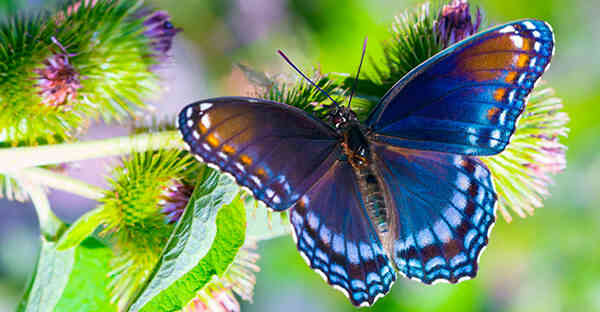Someone, looking at butterflies, admires their weightless beauty, and someone claims that it is hairy caterpillars with wings. The truth, as always, is somewhere in the middle — because butterflies do develop from caterpillars. There are a great many species of these creatures in the world, which are studied and bred by thousands of enthusiasts.
Interesting facts about butterflies
- The shape and wingspan of butterflies of different species varies from 2 mm to 28 cm.
- Butterflies (or, as scientists call them, Lepidoptera) are one of the richest insect orders in terms of the number of species. To date, more than 158,000 butterflies are known to exist on the planet. It is assumed that up to 100 thousand species of these insects have not yet been discovered by scientists.
- Butterflies inhabit all the continents and islands of the Earth, except for Antarctica (interesting facts about Antarctica).
- Butterflies appeared on the planet more than 200 million years ago – scientists discovered their remains dating back to the Jurassic period.
- Agrippina scoop is a butterfly with the largest wingspan of all known species of these insects. It is up to 28 cm, and according to some sources – even up to 31 cm.
- The record-breaking butterfly for the total wing area is the female Saturnia, living in Australia and New Guinea. The surface of its wings can reach 263 cm (interesting facts about Australia).
- One of the smallest butterflies on the planet are baby moths, whose wingspan is about 4 mm.
- Some butterflies, such as peacock-eyes or clothes moths, do not eat at all – in adulthood they use up the nutrients accumulated in the caterpillar stage.
- Bag butterflies, or psyches, live in the form of an adult insect for only a few minutes for which they have time to mate and lay eggs.
- The compound eyes of butterflies can have up to 27 thousand segments.
- The vision of butterflies allows them to distinguish colors, however, the ability to see certain shades depends on the species. Blue-violet and yellow-red colors are known to be most attractive to butterflies (interesting facts about vision).
- Butterflies see moving objects much better than stationary ones.
- Most butterflies have a sense of taste using receptors located on their legs, like spiders (interesting facts about spiders).
- Some butterflies have special membranes on their abdomens that allow them to hear ultrasound from 10 to 100 kHz.
- Almost all butterflies have a symmetrical pattern on the right and left wings, but there are also species with different patterns on each side of the body – for example, the Madagascar urania (interesting facts about Madagascar).
- The color and pattern of the wings of butterflies depend on , under what conditions the caterpillar lived and at what temperature the chrysalis developed, into which it turned.
- The body temperature of butterflies, which is optimal for flight, is 30-35 degrees Celsius.
- Most butterflies are capable develop a speed of 7 to 17 km/h in flight.
- Butterflies from the Scoop genus, living in India and Malaysia, feed on the tears and blood of large animals (interesting facts about India).
- butterflies, during the development of which a genetic mutation occurs, one half of the body can be male and the other female. Sometimes only certain parts of the butterfly’s body have signs of the opposite sex – for example, a piece of the male’s wing has a color characteristic of females.
- Mating of butterflies lasts from 20 minutes to several hours. All this time, the female and male are completely motionless.
